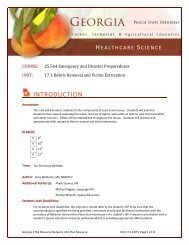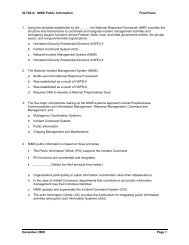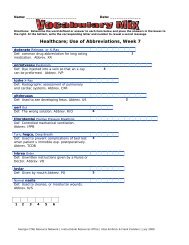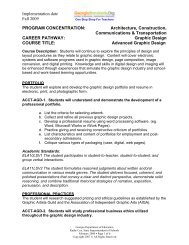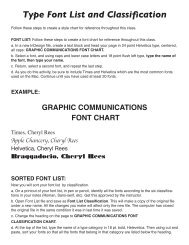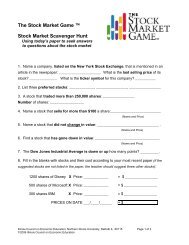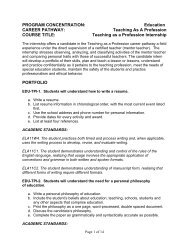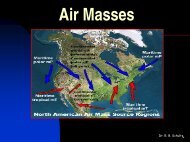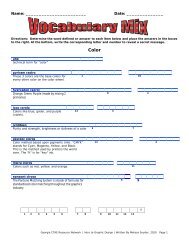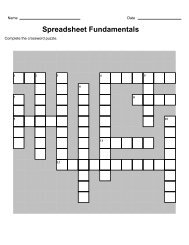emt-basic curriculum module 4
emt-basic curriculum module 4
emt-basic curriculum module 4
Create successful ePaper yourself
Turn your PDF publications into a flip-book with our unique Google optimized e-Paper software.
State of WisconsinEMT-Basic: A Practice BasedApproach to EMS EducationContextual (When, Where, Why)1. The EMT-Basic student must prepare to assess and manage patients withcardiac emergencies.2. The training laboratory must provide simulated cardiac situations, both onconscious and unconscious patients, for the student to practice demonstratedskills.3. The student must be able to integrate many single skills into one simulatedcardiac arrest scenario in order to perform safe and effective practice aftercourse completion.STUDENT ACTIVITIESAuditory (Hear)1. The student should hear computer voice simulations made by automatedexternal defibrillators giving instructions on protocols or shocks.2. The student should hear of actual cases where cardiac arrest resuscitationefforts were successful and unsuccessful and the reasons for the outcomes.Visual (See)1. The student should see an instructor team appropriately resuscitate asimulated cardiac arrest patient using an automated external defibrillator.2. The student should see re-enactments of cardiac arrest resuscitation effortsby EMT-Basics using automated external defibrillators.3. The student should see an instructor team appropriately administer a smallcandy or breath spray sublingually to a simulated patient presenting withchest pain.4. The student should see re-enactments of EMS calls where a patient has beenassessed and assisted in the administration of aspirin.5. The student should see re-enactments of EMS calls where a patient has beenassessed and assisted in the administration of nitroglycerin.Kinesthetic (Do)1. The student should practice the assessment and emergency medical care ofa patient experiencing chest pain/discomfort.2. The student should practice the application and operation of the automatedexternal defibrillator on both pediatric and adult patients.3. The student should practice maintenance checks of the automated externaldefibrillator.4. The student should practice performing the steps in facilitating the use ofaspirin for chest pain using a suitable candy tablet.5. The student should practice performing the steps in facilitating the use ofnitroglycerin for chest pain using a suitable candy tablet and breath spray.6. The student should practice the assessment and documentation of patientresponse to the automated external defibrillator.7. The student should practice the assessment and documentation of patientresponse to aspirin and nitroglycerine.Module 4-38



